Silverstone PB06 USB Power Bank Tear-Down
A Modern Convenience, A Necessity For Some
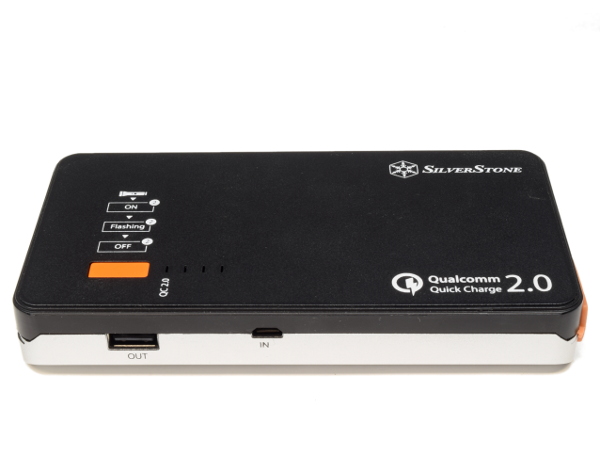
The road warrior's quest for “all-day mobile computing” is over a decade old. Today, most of the advances in efficiency we see are immediately countered by feature bloat, power-hungry features, and smaller batteries to fit in thinner devices, yielding little to no net improvement in overall battery life. Two increasingly popular options have surfaced to break this stalemate: fast-charging schemes to enable quick top-offs when an external power source is available and portable power banks for on-the-go charging.
Here, SilverStone’s PB06 kills two birds with one stone, giving you the convenience of mobile charging and support for Qualcomm’s Quick Charge 2.0 to make on-the-go charging quicker as well.
MORE: SilverStone Stash Tour
MORE: Best Deals
The Box
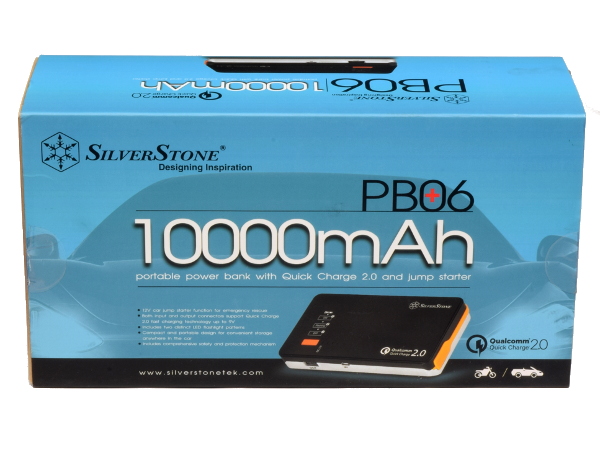
On the cardboard sleeve’s front, we have a brief overview of the unit's features:
- 10,000mAh battery capacity
- 12V jump-starting capability
- Quick Charge 2.0 support for both input and output
- Two-pattern LED flashlight
- Compact design for convenient storage in the car
- Comprehensive safety and protection mechanism
All of these features sound reasonable enough except for one: I wouldn’t recommend leaving lithium batteries in the car where they can fail from overheating. Also, since lithium batteries lose a lot of their output current capacity at temperatures significantly below freezing, you want your booster battery to be warm so it can give you every cranking amp it is capable of should you ever need it in -20°C weather.
MORE: SilverStone Stash Tour
MORE: Best Deals
Specs
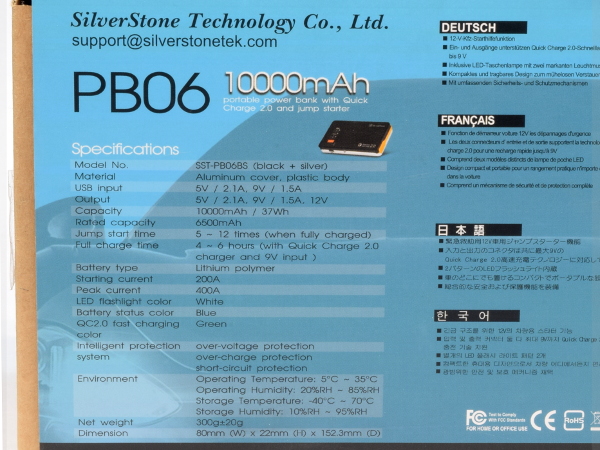
There are more detailed specifications printed on the back of the box, along with the basic product description in 10 different languages.
Get Tom's Hardware's best news and in-depth reviews, straight to your inbox.
Did you notice the apparent discrepancy between the PB06's "capacity" and "rated capacity"? Where does that come from? Simple: 10Ah is the total aggregate capacity of its 3.7V cells for travel restrictions, while 6500 mAh is the effective capacity after converting the internal battery voltage to 5V.
As far as starting current goes, 200A from a 300g package may sound improbable, but certain R/C batteries have been achieving high discharge rates for years, so I have little reason to doubt this spec.
MORE: SilverStone Stash Tour
MORE: Best Deals
Paperwork

The only documentation included with SilverStone's PB06 is its manual, which is organized as one feature followed by related information in all 10 languages. While this enables a more compact booklet by eliminating illustration duplication for each language, it does mean more page turning to find the piece of information you need in your preferred language.
MORE: SilverStone Stash Tour
MORE: Best Deals
Got Case, Will Travel
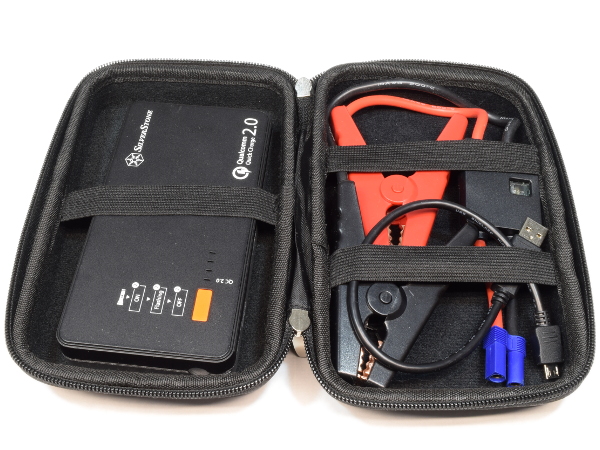
Out of the cardboard box comes a padded carrying case with a woven nylon exterior. The PB06 is packed inside with its accessories: an A-to-Micro-B cable and the booster cables.
Looking at the battery next to its booster cable, doesn’t it seem ironic how lithium-based technology has brought us to the point where battery clips are almost the bulkiest part of the whole boosting process?
The case’s exterior feels like it should stand up well to mild abuse. Inside, though, the straps are too loose to securely hold parts in should you open the case face-down.
MORE: SilverStone Stash Tour
MORE: Best Deals
Plain USB

Unless you have a desktop USB charger, USB hub, or power outlets, you will likely find that the 13”-long cable (from tip to tip) is of limited use beyond connecting your micro-B device to the power bank somewhere where they won’t move much relative to each other.
I was half-expecting to receive one of those reversible cables that SilverStone seems to like so much, and was disappointed to find plain old one-way connectors. Not that it really matters, given the cable's length. I’ll simply replace it with one of SilverStone’s one-meter CPU01 cables.
MORE: SilverStone Stash Tour
MORE: Best Deals
Tragically Short (Maybe?)
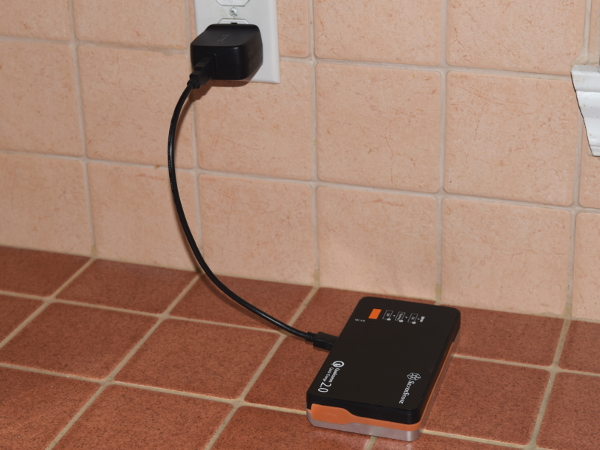
Most of the people I know leave their mobile gadgetry and chargers on the kitchen counter, so I set out to see if charging the PB06 in similar fashion, but with a 13" cable, is viable.
Using my Nexus 7’s AC adapter, the USB cable barely manages to reach the PB06’s Micro-B connector at a questionable entry angle. This simple experiment tells us that 18" would have helped minimize unnecessary strain on connectors.
Upon further inspection, I realized that the odd angle was partly due to the Micro-B socket being loose inside the PB06. I wasn’t planning a tear-down, but now I need to in order to determine if this is a manufacturing defect or accidental damage.
MORE: SilverStone Stash Tour
MORE: Best Deals
Booster Cables
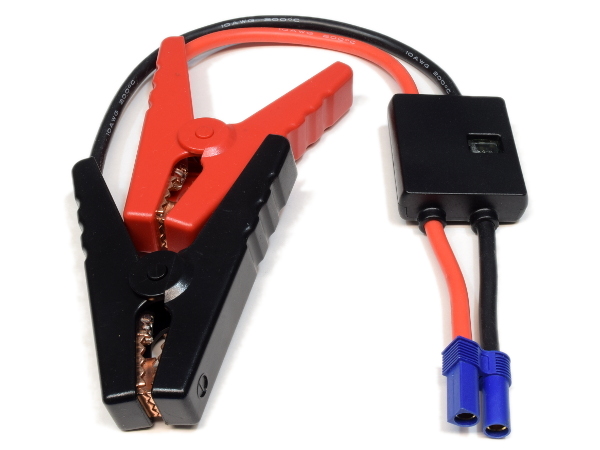
Next on the accessories list are the jumper cables, made of #10 copper wires with insulation rated for 200°C and a total length from connector to clip tips of 14” for the positive cable and 18” for the negative. Both have what feels like a sensible amount of clamping force.
While #10 may sound far too thin for 200A, keep in mind that a car in good working order should start within three seconds of cranking. For its intended use, the copper’s specific heat should easily keep wiring temperature in check.
With that said, 200A through ~0.0035Ω worth of wiring is still 0.7 fewer volts out of whatever the lithium battery can output under that load contributing to cranking power.
MORE: SilverStone Stash Tour
MORE: Best Deals
200A Connector

What is the secret to passing 200A through a connector? On the female side of the connection, you keep things simple by hollowing out a piece of brass at both ends, crimping or soldering the wires in one, and leaving the other side open for the male end. It's the same basic “round pin in round hole” principle as the old AMP HDD power connector, just scaled up.
MORE: SilverStone Stash Tour
MORE: Best Deals
Single-Sided Drive
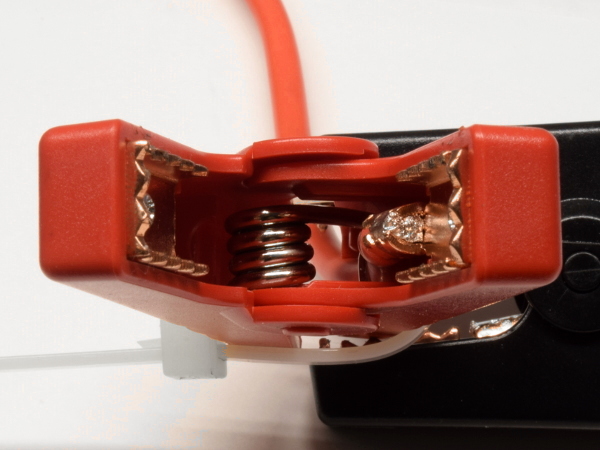
At the battery clamp end of the cable, we find the wire electrically connected to just one of the two jaws with what appears to be a crimp on tinned wire attachment. In general, you don’t want to tin wire in a crimp since tin is a soft metal that will flow out of the crimp over time and weaken it. A good dry-crimp or spot-weld would be more appropriate, perhaps with a ferule in-between to hold the strands together.
Having 200A flow through the one, two, or maybe three teeth that will make contact with the battery’s terminals may introduce significant resistance and voltage drop. SilverStone could easily halve that by adding a bridge wire between the two jaws in a future product revision.
MORE: SilverStone Stash Tour
MORE: Best Deals
Our Main Feature
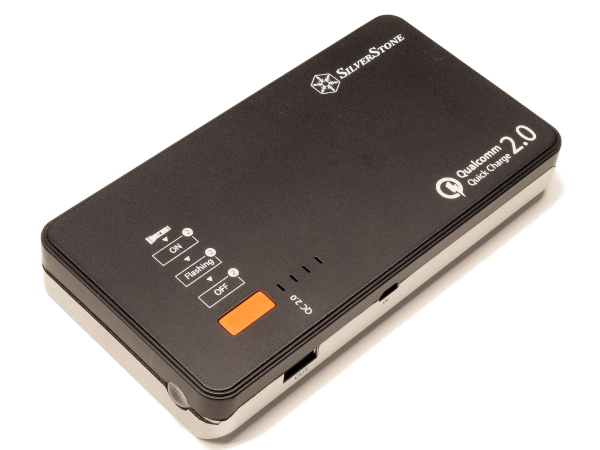
On top, we find the mode selection switch. A simple press turns on the 5V output, while a double-press cycles the flashlight through its three modes: on, flashing, and off. Four slots next to the orange button allow the green QC and blue 70+%, 30-70%, and 0-30% charge level indicators to shine through. In the front (bottom-left), you see the flashlight’s large dome lens, while the other visible edge hosts the type-A device charging port and the PB06’s own Micro-B charging port.
MORE: SilverStone Stash Tour
MORE: Best Deals
-
Daniel Sauvageau For those wondering how that third unit turned out, its 12V cover is in-between the first two: tight enough not to slip out on its own, but not snug enough to stay put completely either. So far, the micro-B connector hasn't broken off from mild intentional abuse.Reply -
alextheblue For those who want jump-starting first, with a dash of USB charging, Noco's Genius Boost GB40 is solid. The GB40 is rated at 1000A "3 seconds" which falls somewhere between cranking and peak amps. They have even more powerful options too. They're pricey unless you find a good deal. Other good-looking (brand and otherwise) options I've run across that prioritize jump starting but still have decent USB 5V capability:Reply
- Omega's 80600. 350/700A peak. I've used this model. Also sold under Pro-Lift I-8006 series. 6000 rated mAh 5V capacity IIRC.
- Omega's harder-to-find 81100 unit. 400/800 amps - rated 11000 mAh
- Ravpower's RP-PB053 600A peak unit. 18000 mAh "raw"/unrated capacity.
- Ravpower's RP-PB063 1000A peak unit. 14000 mAh - rated?
- Bolt Power's D29 450/900A peak unit. 18000 unrated mAh.
- Wagan's 7506 V10 "400"/700A peak unit.
Of those probably the most interesting units is Ravpower's RP-PB063. It's still geared towards jump starting but it has faster charging than any of the other ones above - one of its USB ports even supports QC 3.0. -
Olle P Overall a nice in-depth review!Reply
Two oddities though:
1. This is NOT a 10Ah battery pack. Since the cells are connected in series it's just 3,3Ah.
2. The ripple is measured at ~9V. Shouldn't the USB output be 5.0V? -
Daniel Sauvageau Reply
Most power banks report the total combined rating of their lithium cells. Travel restrictions don't care if the cells are in series or parallel, all they care about is the total Wh or Ah capacity of the underlying cells. For the end-users, 50Wh is 50Wh regardless of series or parallel as well. When you buy a 5.2Ah power bank, you usually find a pair of 2600mAh cells in parallel but this only gives you ~4V, so you need a boost converter to get that up to ~5.1V. Since the PB06's battery voltage is 12.6V, it uses a buck regulator to bring that down to 5V or 9V instead.19542706 said:Overall a nice in-depth review!
Two oddities though:
1. This is NOT a 10Ah battery pack. Since the cells are connected in series it's just 3,3Ah.
2. The ripple is measured at ~9V. Shouldn't the USB output be 5.0V?
I suppose I should have tested at 5V too instead of 9V Quick Charge. Same inductor and switching frequency though since all the QC voltage selection chip does is change the switching regulator's feedback voltage divider, so ripples would still be quite significant at about half as much. -
Olle P Reply
There's a HUGE difference between watthours (stored energy) and amperehours (battery capacity), since the former takes the voltage into account.19543501 said:
Most power banks report the total combined rating of their lithium cells. Travel restrictions don't care if the cells are in series or parallel, all they care about is the total Wh or Ah capacity of the underlying cells. For the end-users, 50Wh is 50Wh regardless of series or parallel as well.19542706 said:1. This is NOT a 10Ah battery pack. Since the cells are connected in series it's just 3,3Ah.
The package clearly states 10 Ah, which it's not.
It's 3.3 Ah, 36 Wh.